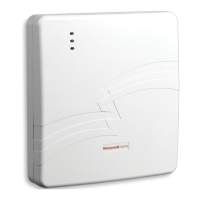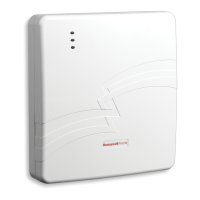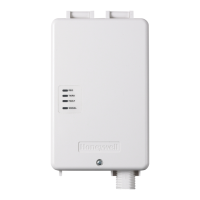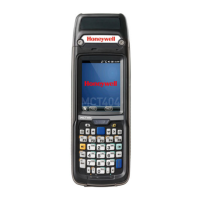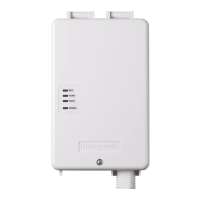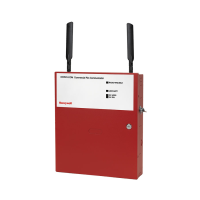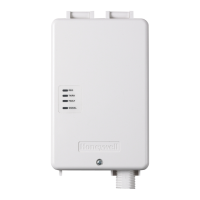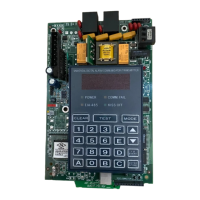LTE-CF Installation and Setup Guide
2
System Features
Basic features include:
Supports dynamic or static IP addressing, and installs behind firewalls without compromising
network security.
Quick connection to compatible Honeywell series control panels.
Simple programming using a 7720P programming tool.
Reports fire and status messages via the Internet.
Reports messages via the Internet and uses Cellular as backup.
Allows uploading and downloading of control panel data over the Internet.
(UL: A technician must be on-site to test the system after any programming is changed.)
About AlarmNet-i Internet Application
AlarmNet-i is a fully encrypted, secure method of delivering alarm messages from a protected
premise to an AlarmNet equipped central station. The internet communicator transmits status,
supervisory, and alarm messages to the AlarmNet Control Center using a broadband Internet
connection.
The AlarmNet Control Center identifies, validates, and forwards the messages to the appropriate
AlarmNet central station. AlarmNet-i has an unlimited account capacity.
Encryption
The communicator uses 256 bit AES (Rijndael) encryption (which is required for certain
government installations). The AlarmNet-i AES Encryption Software Module Version 1.0
contained in the Honeywell products has NIST approval. Listings for this approval can be found
at https://csrc.nist.gov/projects/cryptographic-algorithm-validation-program/validation/validation-
list/aes and search for “Certification number 979.”
UL
The IP and Cell signaling paths are suitable for encrypted line security. The system
configurations are not suitable as a Dual Line Signal transmission system.
Operation
The communicator interfaces with the control panel using Honeywell’s ECP bus.
Used with any UL Listed control panel that supports ECP communication.
The communicator connects to the control panel’s keypad terminals and provides 2-way
communication with the control panel using ECP messaging.
The control panel treats the communicator as an ECP device, so ensure to program the
control panel with the communicator’s device address.
Reports are sent in Contact ID format.
Supervision Features
The communicator provides the following types of supervision and fault detection:
Network communication failure: In the event the AlarmNet network does not hear a
supervisory message from the communicator within a specified time, AlarmNet notifies the
central station of a communication failure.
Communication path failure: In the event the module detects a communication path failure,
both the Central Station and the control panel can be notified of the trouble condition. Both
failures are considered true faults when their fault times have expired. If the Internet or Cell
communications path fails, a message is reported.
Primary power loss and low battery conditions (detected by the control panel, and may be
reported via the communicator if programmed to do so).

